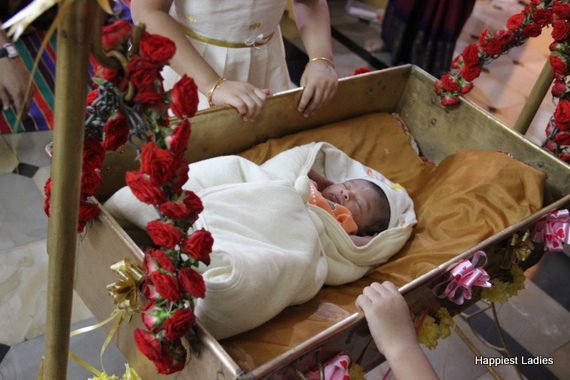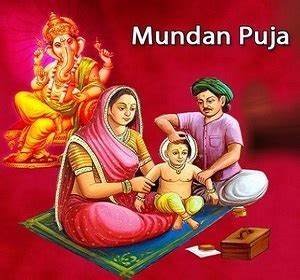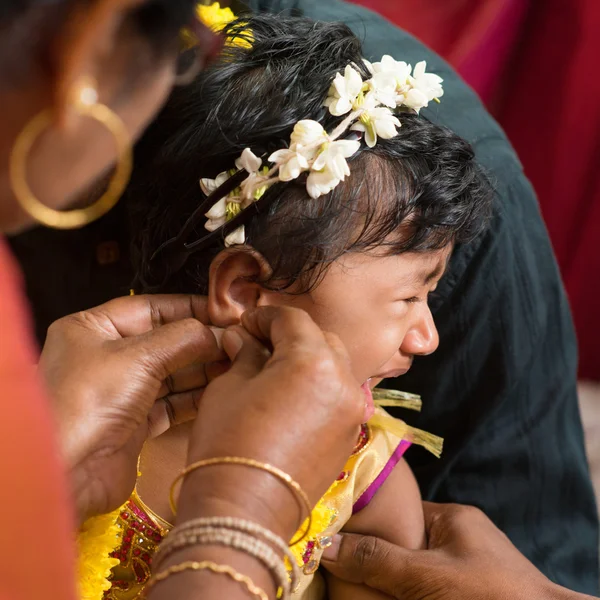The 16 Sanskaras (Sacraments) in Hinduism and Their Relevance Today
The 16 sanskaras in Hinduism represent important sacraments or rites of passage in an individual’s life. These ceremonies mark the milestones from conception to cremation and are intended to purify, protect, and bless the person at each stage. The purpose of these sacraments is to cultivate a sense of growth, spirituality, and connection with the divine through every significant transition in life. Let’s delve into each sanskara, its traditional significance, and its relevance in today’s world.
1. Garbhadhana (Conception)

Meaning: This is the ceremony of conception, where prayers are offered for the well-being of the future child. It represents the conscious decision to bring new life into the world.
Relevance Today: Although not commonly practiced in the modern context, the essence of Garbhadhana lies in mindful parenting. Today, parents prepare emotionally and physically to welcome a new life, which aligns with the idea of intentional family planning and conscious conception.
2. Pumsavana (Engendering a Male Child)
Meaning: Performed during the third month of pregnancy, this sanskara involves prayers for the health and safe development of the fetus.
Relevance Today: Rather than gender, this sanskara can be reinterpreted as a blessing for a healthy pregnancy, focused on the well-being of both mother and child. Modern parenting values revolve around healthy development, and this ceremony encourages positive energy for expecting parents.
3. Simantonayana (Parting the Hair)
Meaning: Conducted during the seventh month of pregnancy, this ritual is meant to ensure the safe delivery of the baby and protect the mother from negative influences.
Relevance Today: Similar to a baby shower, Simantonayana is about supporting the mother-to-be. It can be adapted as a celebration of community support, well-being, and mental health of the mother, especially as she approaches childbirth.
4. Jatakarma (Birth Ceremony)

Meaning: This ceremony celebrates the birth of the child and includes the father whispering sacred words in the baby’s ear.
Relevance Today: The modern equivalent can be the first blessing or naming ceremony where family members gather to welcome the newborn. It symbolizes family bonding and the joy of new beginnings.
5. Namakarana (Naming Ceremony)

Meaning: Performed on the 11th or 12th day after birth, this ceremony officially names the child.
Relevance Today: Naming ceremonies are still widely practiced across cultures as a way to introduce the child to the family and community. It brings a sense of identity and belonging from an early age.
6. Nishkramana (First Outing)
Meaning: The first time the child is taken outside, typically to a temple, to introduce them to the world.
Relevance Today: Modern families may use this as the baby’s first visit to nature or a place of worship. The idea is to gently introduce the child to the larger world beyond their home.
7. Annaprashana (First Solid Food)

Meaning: This marks the baby’s transition to solid foods and is usually performed in the sixth month.
Relevance Today: It’s common to celebrate a child’s first taste of food with family. This milestone recognizes growth and development, emphasizing a healthy start to eating habits.
8. Chudakarana (Mundan or First Haircut)

Meaning: The child’s first haircut symbolizes purification and the shedding of past karma.
Relevance Today: Haircuts are often performed without ritual significance, but many families still see this as a rite of passage and continue the tradition to honor cultural heritage.
अभी जॉइन करें हमारा WhatsApp चैनल और पाएं समाधान, बिल्कुल मुफ्त!
हमारे ऐप को डाउनलोड करें और तुरंत पाएं समाधान!
Download the KUNDALI EXPERT App
हमारी वेबसाइट पर विजिट करें और अधिक जानकारी पाएं
संपर्क करें: 9818318303
9. Karnavedha (Ear Piercing)

Meaning: The child’s ears are pierced in this sanskara, which is traditionally believed to have health benefits and spiritual symbolism.
Relevance Today: Ear piercing is still popular across many cultures, both as a beauty practice and a cultural tradition. It remains a rite of initiation for many Hindu families.
10. Vidyarambha (Beginning of Education)
Meaning: This ritual introduces children to learning, often with the tracing of letters or mantras.
Relevance Today: Vidyarambha is similar to a child’s first day of school, emphasizing the value of education. It instills respect for knowledge and learning in a child from an early age.
11. Upanayana (Sacred Thread Ceremony)
Meaning: The Upanayana ceremony, or initiation into formal education and responsibility, is traditionally performed for boys and marks the beginning of the study of the Vedas.
Relevance Today: This ceremony is less common but is viewed as an initiation into adulthood. For some, it signifies the beginning of responsible learning, discipline, and spiritual awareness.
12. Vedarambha (Beginning of Vedic Study)
Meaning: This marks the start of studying the Vedas and religious scriptures, highlighting dedication to learning.
Relevance Today: The core idea of Vedarambha is dedication to education and knowledge, which remains relevant as students begin formal education or higher studies.
13. Keshanta (First Shaving)
Meaning: Keshanta, traditionally marking the first shave for boys, represents the transition to adulthood.
Relevance Today: While the ritual itself is rare, the transition into adulthood is celebrated in modern rites such as graduation ceremonies. This milestone is about recognizing maturity and responsibility.
14. Samavartana (Graduation or Completion of Studies)
Meaning: This is a graduation ceremony symbolizing the completion of formal education.
Relevance Today: Samavartana is equivalent to modern graduation, celebrating educational achievements and the student’s readiness to enter society with knowledge and skill.
15. Vivaha (Marriage)

Meaning: The wedding ceremony is one of the most celebrated sanskaras, marking the union of two individuals and their families.
Relevance Today: Vivaha remains one of the most observed sanskaras, with weddings celebrated according to traditions. Marriage in Hinduism signifies companionship, love, and shared responsibilities.
16. Antyeshti (Funeral Rites)
Meaning: The last sanskara, Antyeshti involves the cremation of the body and final prayers for the soul’s peace and journey beyond.
Relevance Today: Funeral rites are practiced to honor the deceased and seek peace for their soul. These rituals are an expression of respect, remembrance, and closure for families.
Why Are the 16 Sanskaras Relevant Today?
In today’s rapidly evolving world, the essence of the 16 sanskaras holds deep relevance as they nurture holistic development, foster values, and offer a sense of community and belonging. Here’s how these sacraments resonate in modern society:
Emotional and Social Support: Each sanskara creates an occasion for family and community support, strengthening bonds and providing a support system at significant stages of life.
Instilling Values and Identity: The sanskaras embody values like responsibility, respect, and spirituality. Practicing them fosters a sense of cultural identity and belonging.
Encouraging Growth and Learning: From education to marriage and beyond, the sanskaras remind individuals of the importance of personal growth, ethical conduct, and societal roles.
Spiritual Awareness: These rituals encourage reflection, mindfulness, and connection with the divine, offering opportunities to cultivate spiritual awareness and personal peace.
Preserving Cultural Heritage: Observing the sanskaras in even a simplified form helps to keep ancient traditions alive, passing down the wisdom of ancestors to future generations.
Conclusion
The 16 sanskaras serve as timeless markers of life’s journey, guiding individuals through each stage with values, blessings, and wisdom. While their practices may have evolved, their essence remains relevant, promoting growth, stability, and connection within families and communities. In today’s context, these sanskaras can be adapted as meaningful milestones, helping individuals honor the traditions of Hinduism while navigating modern life.


